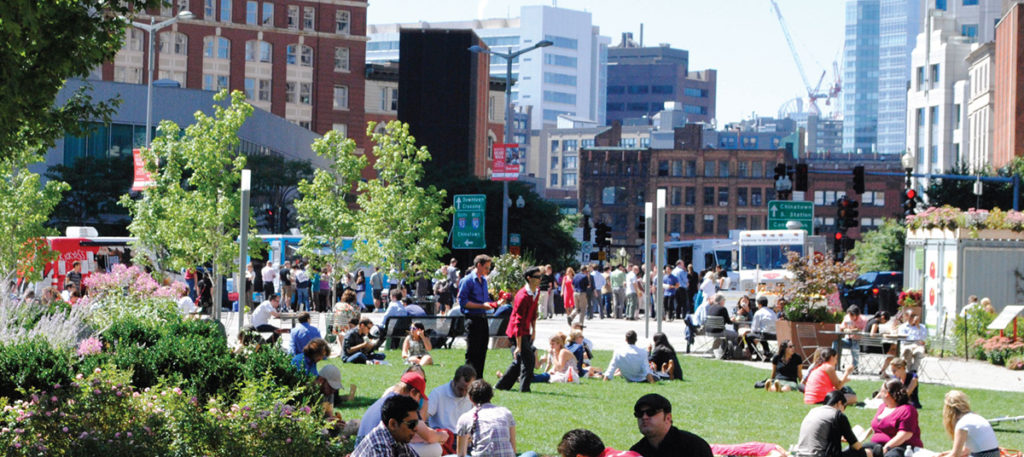Parting Words: A Decade of Innovation on The Greenway
Written by Jesse Brackenbury, Executive Director
As I prepare to step down in late April to lead the Statue of Liberty-Ellis Island Foundation, I’m reflecting on the Conservancy’s work over the 11 years I’ve worked here. Two previous blog posts focused on our sustainability work and our success in bringing The Greenway to life. Today I’ll focus on how The Greenway, in the words of BostInno, “earned the reputation of being one of the most innovative spots in all of Boston.”
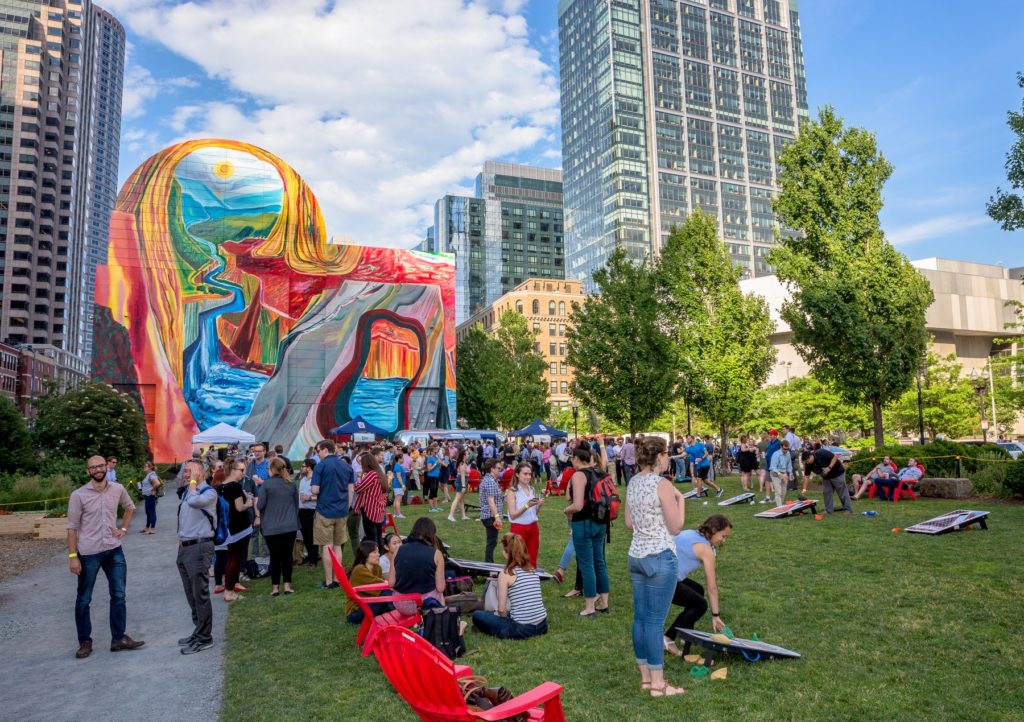
Boston is a global leader in innovation in biotech, healthcare, and education, and the Conservancy is committed to delivering a 21st century public park. We’ve brought multiple firsts to Boston parks with an approach that celebrates new ideas.
We brought Boston its first food truck in 2010, and we’ve continued that entrepreneurial commitment. We’ve partnered with local food businesses; two-thirds of our food trucks are minority- or women-owned. Businesses sprung up to offer food tours that included our food trucks and farmers market between Chinatown and North End food destinations. We’ve hosted a huge food festival in which New York trucks faced off against Boston trucks. Our foodie passion, however, has been strategic: since a visitor to the narrow Greenway is never more than a few steps from nearby restaurants, the park’s food offerings must be distinctive.
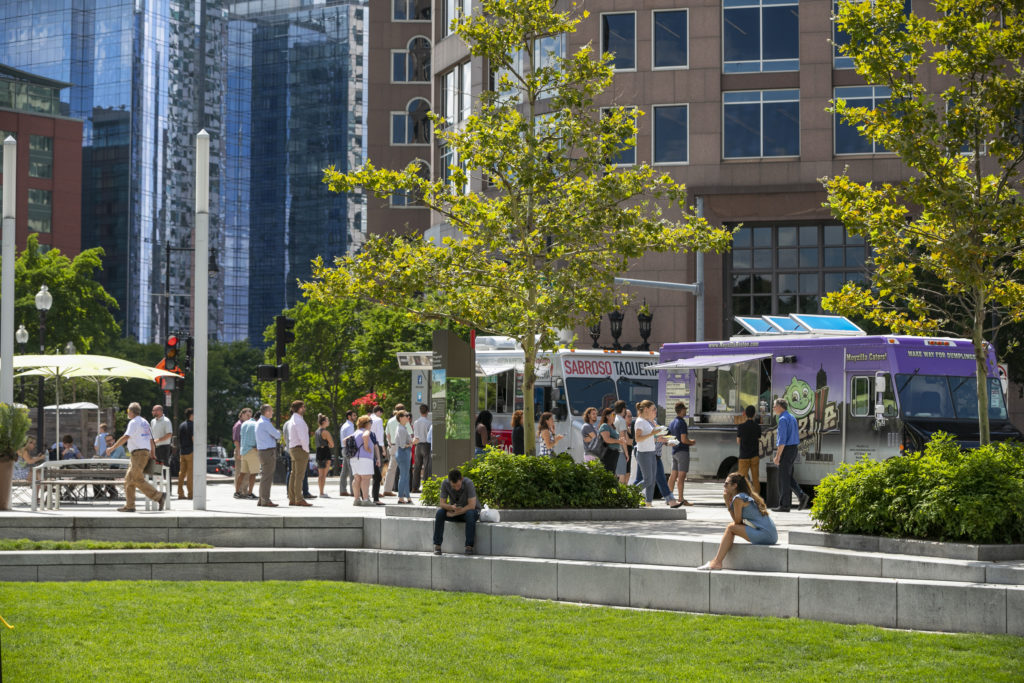
The Conservancy brought the first beer garden to a Boston park when the Trillium Garden on The Greenway opened in 2017. Happily, this innovation has since spread widely with many beer gardens operating through the City. We aim to combine innovation with a commitment to the outstanding and unique: Trillium Brewery was founded just blocks away but is routinely rated among the world’s best.
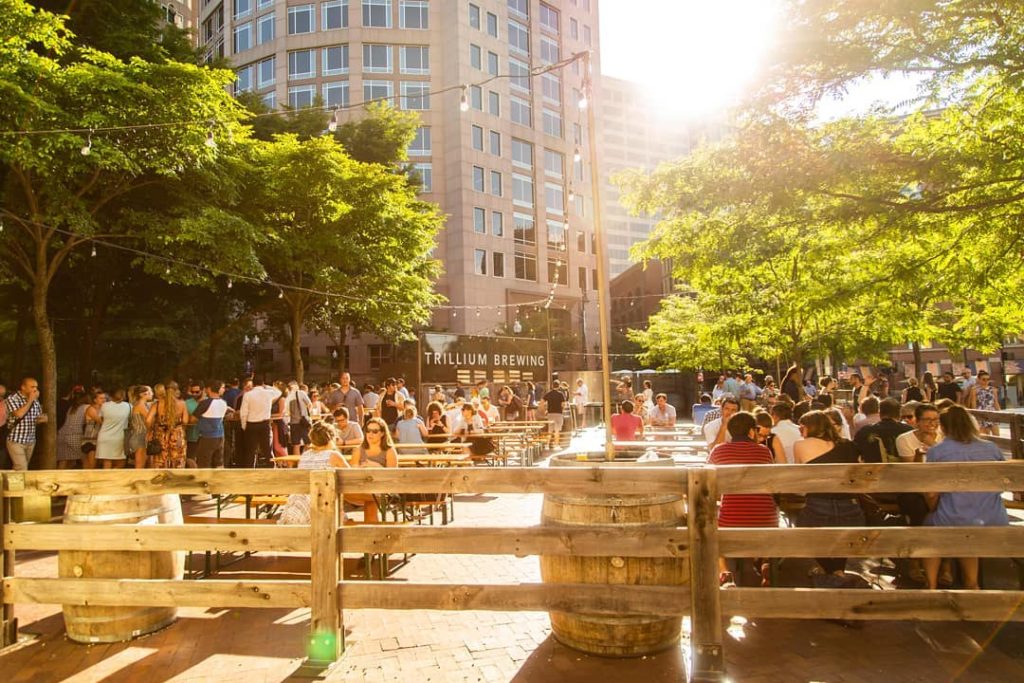
Photo provided by Trillium Brewing
Our drive to bring the new and world-class is perhaps best exemplified in our public art. In 2012, the Conservancy launched the City’s first contemporary public art program in a park and we have since won more awards from Americans for the Arts than any other non-profit in the country. The Greenway Wall across from South Station has become one of the world’s most important sites for murals, rotating artworld luminaries such as Os Gemeos (2012), Lawrence Weiner (2015), and Mehdi Ghadyanloo (2016). We’ve pushed the envelope on materials for public art, including an outdoor 3D printer for Chris Templeman’s Make and Take that operated continuously through the Year of the Rooster. Janet Echelman’s monumental fabric sculpture, suspended 350’ over The Greenway from surrounding skyscrapers in 2015, was “the most beautiful and audacious piece of public art in Boston in living memory” according to the Globe’s Pulitzer Prize-winning art critic, Sebastian Smee. We took this opportunity to change our brand image to align with our innovation aspirations.
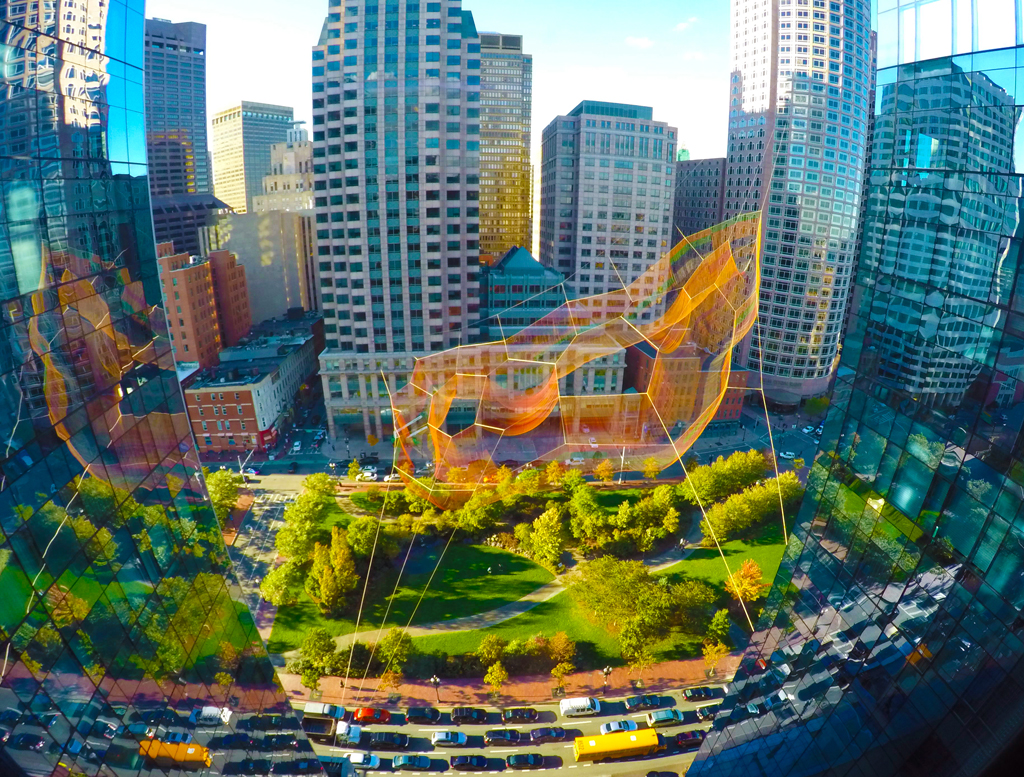
Photo provided by Studio Echelman
Innovation requires a willingness, though, to try things that may not fully succeed. As fun as it was to have the first zipline in a Boston park, it didn’t draw enough visitors to return in 2018. Bumble, our inflatable snowman, was a brief visitor only, as he couldn’t survive downtown’s winter winds.
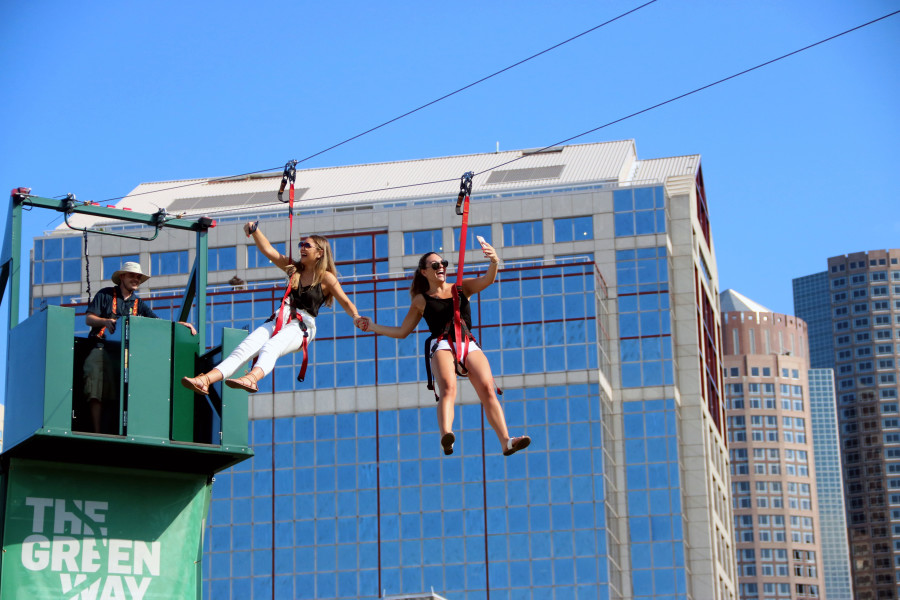
Much more successful has been our innovation in the business model for park stewardship. The Greenway Conservancy was founded as a part of a public-private partnership, like the nonprofit Central Park Conservancy, to raise funds to supplement ongoing taxpayer support for the public park. The Conservancy has raised over $35M in private philanthropy, and along the way, we have evolved the business model to diversify the funding sources. The Conservancy has grown its yearly earned income from less than $0.1M in 2009 to $1.6M in 2019. Collaboration with the abutting property owners led to the formation in 2018 of the Greenway Business Improvement District, only the second large, park-dedicated BID in the United States. As a result, the Commonwealth’s contribution to the public park’s annual operating budget has shrunk from the original 50% down to ~15%, even as the Conservancy keeps the Commonwealth’s asset in great condition. These novel revenue-generating approaches are now a national model others study.
I am so proud to have contributed to a vibrant Greenway, sustainably maintained, brimming with all these new ideas. It has required risk-taking, but it‘s been incredibly rewarding.
